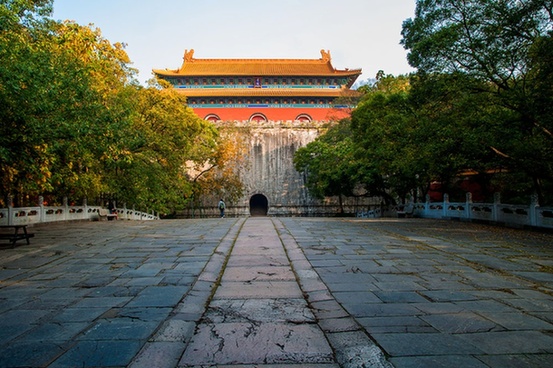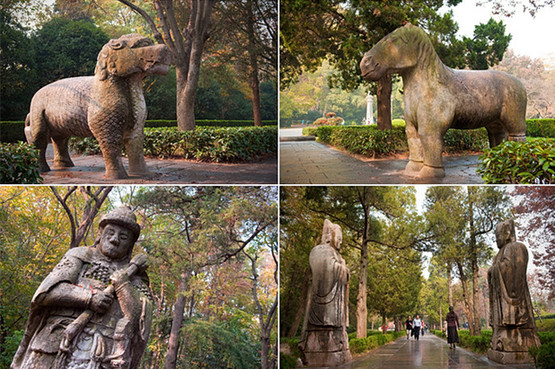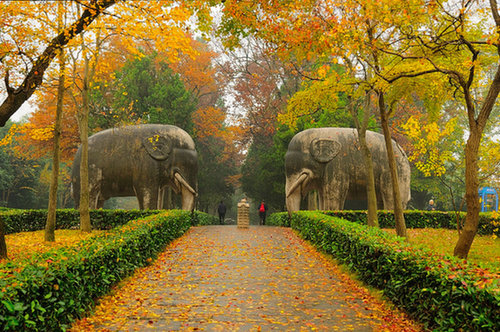 |
|
Tomb of Emperor Zhu Yuanzhang and the Xiaoling Tower. [Photo/nju.gov.cn] |
The Xiaoling Mausoleum of the Ming Dynasty (1368-1644 AD), which is located at the foot of Zijin (Purple–Gold) Mountain in Nanjing, contains the tomb of Emperor Zhu Yuanzhang, founder of the Ming, and Empress Ma and is one of China's biggest imperial tomb sites and a perfect example of the architectural and stone carving achievement of that age.
It was added to UNESCO's World Heritage Sites as the "Imperial Tombs of the Ming and Qing Dynasties", on July 3, 2003, joining the Ming Tombs in Beijing. Work on it began in 1376 and was completed in 1413. It broke with the traditional imperial tomb designs of the time, using a creative layout that copied the palace design by setting the court at the front and the chamber at the back. And, for the next 500 years, more than 20 imperial mausoleums followed its structure.
The mausoleum area stretches more than 2,600 meters from the Xiamafang (Dismounting from a horse archway) to the Mound of the underground palace and has more than 30 buildings and stone sculptures arrayed in an orderly fashion. The details of the interior decorations show the delicate work of that time.
 |
|
Stone sculptures along the Sacred Way to guard the Xiaoling Mausoleum, in Nanjing. [Photo/nju.gov.cn] |
It has an 800-meter-long Sacred Way leading to the main structure, with 12 pairs of stone animals such as elephants, lions and horses on both sides of the road and four pairs of warriors and ministers to guard the tomb. The different styles and facial expressions of these works represent the best of the stone carving art at that time. The winding way follows the surrounding mountain terrain and the mountains and water, allowing the mausoleum to embody the Chinese idea of integrating humans and art and nature.
There are many scenic spots to visit in the Xiaoling Mausoleum area, including the Plum Hills, Zixia Lake, Zhongshan Botanical Garden, and a new Underwater World and the Art World of the Red Mansion.
There s also an annual Plum Festival in the Plum Hills, every February to March, that attracts thousands of visitors who come to enjoy the beautiful blossoms, making it a good choice for a spring outing. In addition, there is the Sun Yat-sen Mausoleum within half an hour's walk.
 |
|
Elephants on the side of the Sacred Way to Xiaoling Mausoleum of the Ming Dynasty. [Photo provided to chinadaily.com.cn] |
For a scholar focusing on Australia's public diplomacy, working as a recreational manager in China may never be part of his career path. But Bradley McConachie does have lots to say now about his special experience at a resort in the picturesque tropical coastal city of Sanya in South China's Hainan province.

One of the potentially most traumatic things a girl has to go through is finding a new hairdresser.